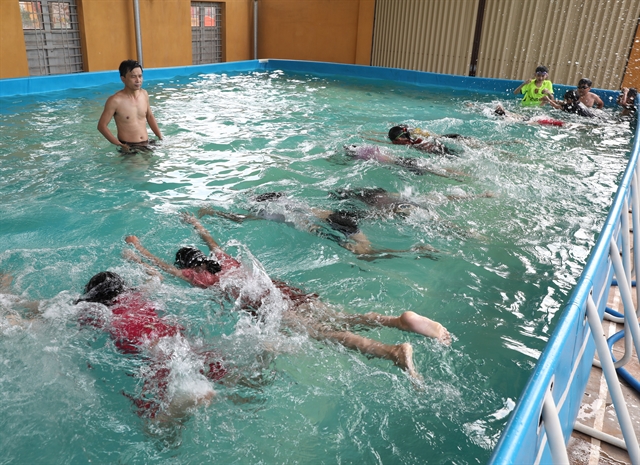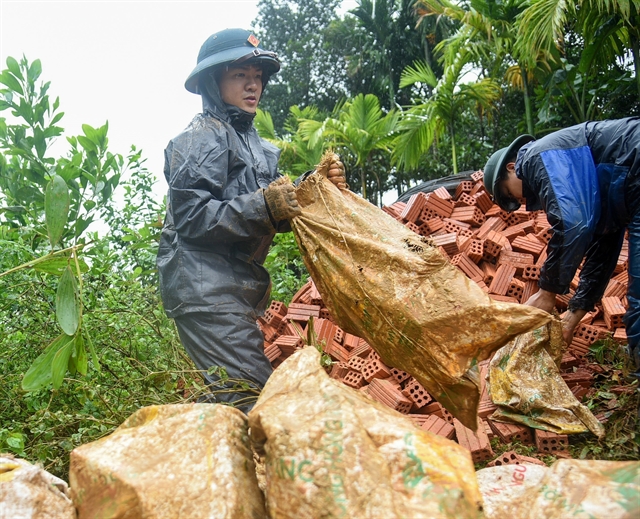 Opinion
Opinion

Deputy director of the Department of Children Protection under the Ministry of Labour, Invalids and Social Affairs Vũ Thị Kim Hoa talks to Vietnam News Agency about solutions to prevent child drowning

|
| Children learn to swim at a free swimming class held at Thanh Lâm Primary School in northern Bắc Giang Province. — VNA/VNS Photo Danh Lam |
Deputy Director of the Department of Children Protection under the Ministry of Labour, Invalids and Social Affairs Vũ Thị Kim Hoa talks to Vietnam News Agency about solutions to prevent child drowning.
Could you talk about the current child drowning situation in Việt Nam?
The rate of child drowning in Việt Nam has dropped compared to previous periods thanks to the direction of the Party, National Assembly and Government and joint efforts of ministries, sectors and localities.
In 2010, a total of 3,300 drowned. The figure reduced to 2,600 in 2015 and 2,000 in 2020. It means that the drowning rate among children dropped by 3-5 per cent each year, equivalent to 100 children.
However, drowning remains the leading cause of death for children in Việt Nam. The incident is more prevalent among boys than girls, and children in rural areas than in urban areas.
Drowning often happens before and during the summer holiday.
Recently, death by drowning has emerged as an urgent problem. There were serious cases where many children drowned together or came from the same family.
Many measures have been implemented, but the drowning rate among children in Việt Nam is still high. Why?
The leading cause is the limited knowledge and awareness of ministries, agencies and the community, particularly parents and children.
Children still lack knowledge and skills about drowning prevention and control. Only 30 per cent of children in Việt Nam know how to swim. The rate of children equipped with safety skills in water environments is also low.
Child management and supervision are not currently effective. Most drowning cases happen when the children play or swim in areas banning swimming, or without adult supervision.
Moreover, the living environment is still not safe. Many deep and dangerous ponds do not have warning signs, and many lakes and rivers do not have barriers. Many children even drown after falling into the water tanks of their own families.
There is also a shortage of equipment, facilities and instructors to teach swimming and safety skills to children.
Some localities ignore drowning prevention and control for children.
Could you talk more about ministries and sectors implementing drowning prevention and control for children?
Recently, the awareness of ministries and agencies on injury and drowning prevention and control for children has improved.
The Prime Minister's decision on child accident and injury prevention and control for 2021-2030 set a target of reducing the fatality rate caused by drowning and increase the proportion of children being taught safety and swimming skill.
All provinces and cities issued plans on child accident and injury prevention and control, and allocated a budget for carrying out such plans.
However, the budget earmarked for this task in some localities is still limited and not much investment was made in upgrading and building facilities.
There is a lack of effective coordination between agencies and local organisations in reviewing high-risk areas and supervising children.
Which solutions do ministries and agencies need to implement to prevent child drowning?
We need to implement synchronous, multi-sectoral and multi-disciplinary solutions.
Initially, authorities of provinces and cities must seriously implement all directions of the Prime Minister, ministries and agencies in child drowning prevention and control.
They need to issue specific plans on drowning prevention and control and regularly check, supervise and review high-risk areas, particularly deep water areas, to install barriers or warning signs to create a safe environment for children.
It is also vital for local authorities to disseminate information to every hamlet, household, and child to raise their awareness of risks and preventive measures.
More attention should be paid to investing and organising swimming classes for children while enhancing inspection and supervision over drowning prevention and control tasks and strictly punishing violations leading to a child drowning.
Parents need to be aware of their responsibilities in ensuring safety for their children and equip themselves and their children with related knowledge and skills.
Ministries and agencies should coordinate with and mobilise the community to teach children swimming and safety skills and provide equipment and facilities for child drowning prevention and control training.
Building a safe environment following criteria and regulations about "safe houses," "safe schools," and "safe communities" issued by the Ministry of Labour, Invalids and Social Affairs and the Ministry of Education and Training will effectively prevent children from drowning. — VNS




